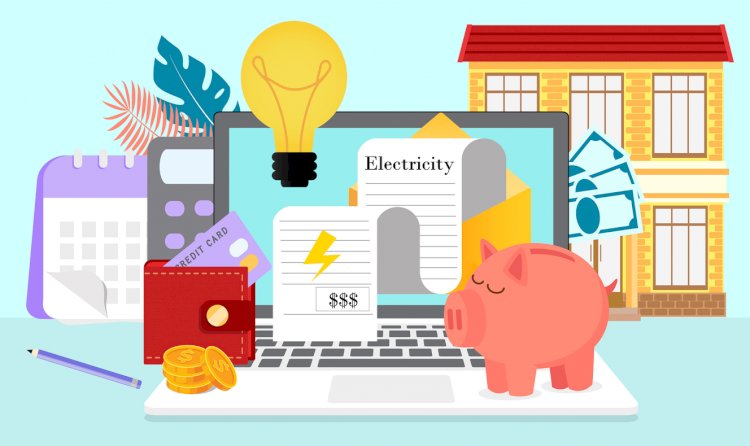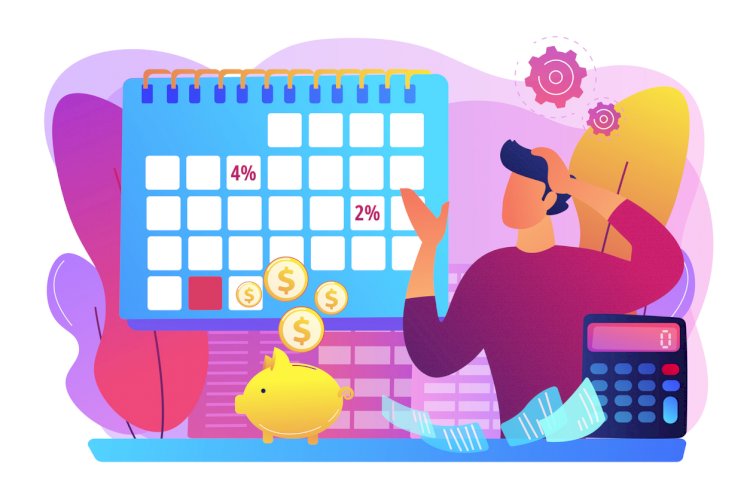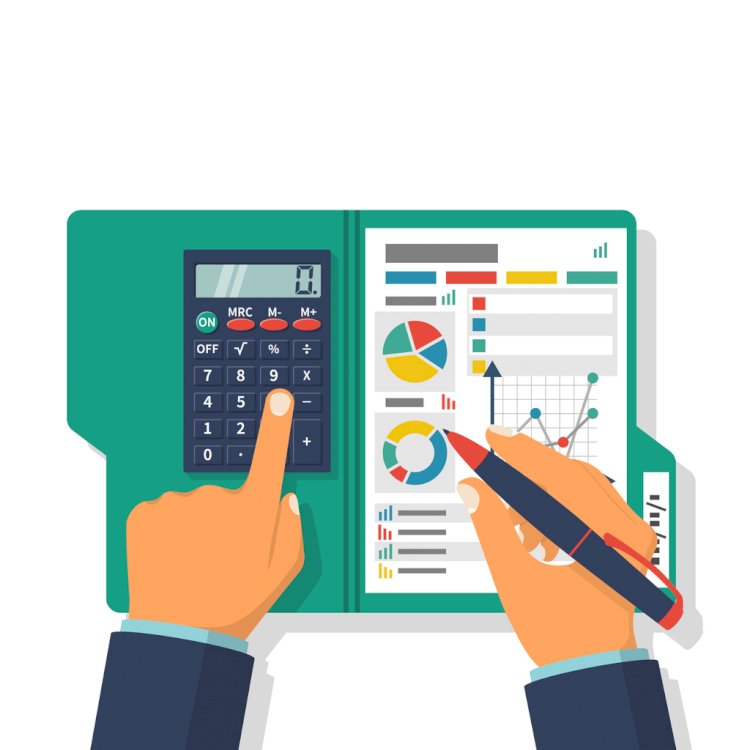Need a Budget? 5 Simple Tips to Help You Get Started
You need a budget. Even if you think you’re doing all right with your money - and chances are you are - every individual and family can benefit from knowing how they’re spending their money each month. Seeing how much you bring in, how much you spend, and just where you’re potentially losing money can be a powerful tool to stabilizing your financial future.

You need a budget.
Even if you think you’re doing all right with your money - and chances are you are - every individual and family can benefit from knowing how they’re spending their money each month. Seeing how much you bring in, how much you spend, and just where you’re potentially losing money can be a powerful tool to stabilizing your financial future.
But when you hear the word “budget,” you think of spending endless hours working with spreadsheets, analyzing every single cent that’s spent and cutting your costs down to the bare minimum.
That isn’t at all what budgeting is designed to do.
Yes, there are some financial “gurus” who take budgeting to an extreme, advising people against ever purchasing that latte on their way to work. But, for the most part, your family’s budget should be a living, breathing document that shines a light on the things you’re doing well and the things you can improve upon.
If you’re looking to get started with a budget for yourself or your family, here are 5 things you can do to get started:
See Where You’re at Now

Before you ever sit down to project how much you “should be” spending on things such as clothing and food, find out just how much you spend on those items right now, without a budget.
If you only utilize credit or debit cards to pay for things, this can be as simple as going through your credit card and bank statements and parsing out what expenses fall into what categories. For larger purchases that included items from multiple categories - that store trip that included some groceries, toiletries, and some entertainment items, for example - do your best to separate the amounts out into each individual category.
For those who pay only in cash or who pay in a mixture of cash and credit, you may need to collect your receipts for a few weeks and comb through them individually.
Choose a Budgeting Method
There are a variety of methods to budget your money, and it will take some trial-and-error to figure out which one works best for your needs.
Zero-based budgeting, popularized by Dave Ramsey, means that you create a budget for every single dollar you bring in each month. This doesn’t mean you spend every single dollar, but that you budget every single dollar.
Once you’ve taken care of your non-negotiable items each month, such as lodging, gas, and food, you create “sinking funds,” or savings banks, for anything you need to save money for. In a typical zero-based budget, for example, you’ll create sinking funds to save up money for your car’s annual registration renewal, clothing, gifts, vacations, and anything else you buy occasionally but not monthly. Additionally, you budget money monthly to go toward your long-term savings goals such as home repairs or a new car.
Another theory of budgeting is that you just create a budget for all the items you are purchasing and saving for, including all your entertainment, clothing, and utilities, and everything else goes into your general savings account.
Just choose a method and create your budget, adjusting your method as necessary if something isn’t working out for you.
Budget Before the Month Starts

With budgeting, you never want to feel as if you’re playing catch-up. If your budget isn’t complete before the new month starts, you run the risk of losing some expenses and having an inaccurate budget going forward.
At least a week before a new month begins, take some time to sit down and map out your budget for the following month. As you budget more frequently, this session also will include a review of your prior month’s budget to see what worked and what didn’t.
Your budgeting session doesn’t have to be fancy. You can sit down with a spreadsheet if you’d like, or just a pencil, paper, and a calculator.
Start by capturing your known income for the next month. If you are salaried and you know you have two steady paychecks coming in that month, then record that amount and use that in your budget. If you own a business or otherwise have an unpredictable income, use an amount that you know is average for you to earn in a month.
Once you’ve got a handle on how much money you have coming in, you need to start figuring out what you have to pay and buy before you get to any of the things you want.
Record all the non-negotiable monthly expenses, including housing and all related costs (utilities, taxes, insurance, etc.), transportation to get to and from work as well as the cost of fuel, food, and anything else that you absolutely must purchase or pay each month.
If you owe student loans, that monthly payment needs to be included. If you have a medical condition that requires medications or doctor visits monthly, those costs have to be included. If you have pets, make sure to record the cost for their food, medical care, and other costs.
Also, don’t forget to include money each month for some kind of savings account. Even if it isn’t much, tossing a little bit of money aside each month will build up over time and give you a little cushion for unexpected expenses.
After you’ve taken care of all your required expenses and stashed a little bit away in savings, start recording all the items that aren’t necessary each month. This includes eating meals out, entertainment, vacations, gifts, and clothing.
Record As You Go
Once the month starts, your work doesn’t end.
Instead, you need to keep track of your expenses as they come up so you are better able to compare your budgeted expenses against your actual expenses.
If you prefer to do everything digitally, there are several apps and platforms that collect your expenditures and allow you to visualize where your money is being spent each month. Many of these platforms even allow you to set your budgeted amounts at the beginning of the month and then compare your expenditures automatically as you go.
For those who want to do the work themselves, make sure to set aside time each day or week to enter all your store receipts and recurring expenses into your spreadsheet or in a notebook. Be sure to record what budgetary categories each of these expenses comes from so you can see how everything you spend fits into your budget.
Adjust As Necessary

At the end of the month, sit down and compare your budgeted numbers to your actual numbers before you create your budget for the next month.
Did you spend way more money eating out than you anticipated, causing you to waste groceries? Perhaps you need to shift some money from groceries into your eating out budget if you’ve got a busy month, or make a commitment to do better with meal prepping.
Are you heading into back-to-school season, so you need to bump up the budget for clothing and school supplies? Find somewhere else in your budget you can trim for a month to make room for this expense.
Your budget is a living document, so it should never be something that’s completely set in stone from month to month. That isn’t real life, and if you lock yourself into very strict numbers you have to meet each month or you feel as if you failed, you’re much more likely to give up on budgeting altogether and blow more money than you would if you allowed yourself a little grace and flexibility.
As you get more experienced with budgeting and working within your budgeted amounts, you’ll begin to see patterns in your spending and find ways you can trim your costs, allowing you to put more money away each month.
Cloud-Based Financial Software for Small Business Owners
As a small business owner, keeping track of your finances is incredibly important. But it can often be one of those tasks that takes over your day and takes your attention away from providing services to your customers. With Toki, you get powerful business financial management tools in addition to a host of other features, including client communications, task tracking, invoicing, time tracking, and more, all in one easy-to-use platform. Use it yourself or get Toki for the whole team - The platform easily scales up and down as your team grows. Try Toki today!

 contact@atassist.com
contact@atassist.com 





